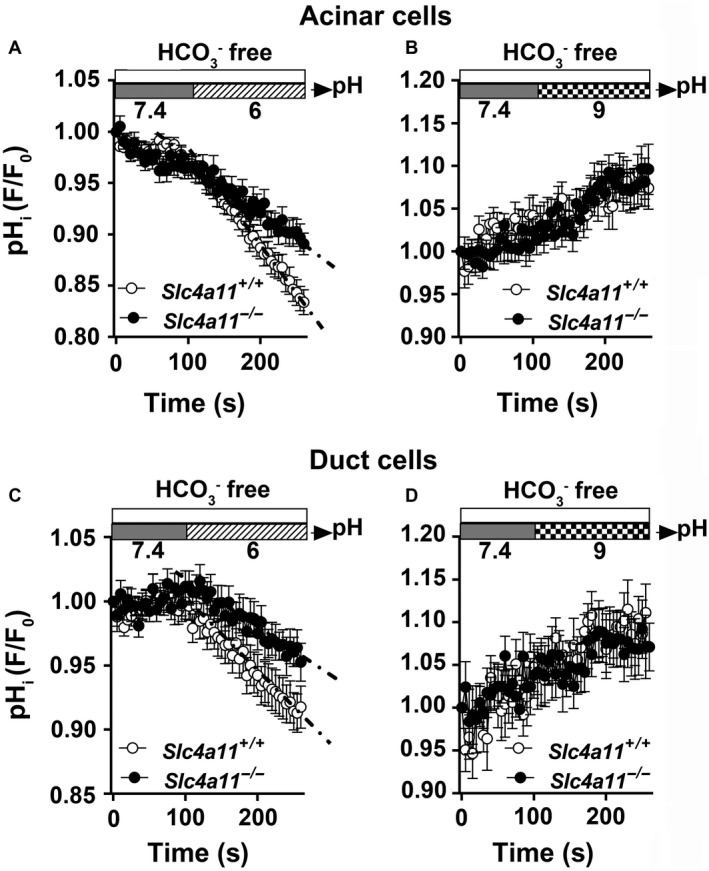Figure 6.

Slc4a11 disruption has little effect on pHi regulation in SMG cells. Acinar and duct cells isolated from Slc4a11+/+ and Slc4a11 −/− mouse SMGs were loaded with the pH‐sensitive dye BCECF and the intracellular pH (pHi) change was monitored during the switch from pH 7.4–6 or from pH 7.4–9. All solutions were HCO3 −‐free (in the presence of 30 μmol/L EZA) to eliminate HCO3 − transport pathways and contained 10 μmol/L EIPA to block Na+/H+ exchange. (A) The acidification rate of the acinar cells isolated from Slc4a11 −/− mice was compared to Slc4a11+/+ mice (acidification rate (10−3/sec) of acinar cells = 0.81 ± 0.07 (n = 27, white circles) and 0.48 ± 0.07 (n = 31, black circles) for Slc4a11+/+ and Slc4a11 −/−, respectively; P < 0.01). (B) The alkalization rate was comparable between acinar cells from Slc4a11+/+ and Slc4a11 −/− mice (alkalization rate (10−3/sec) of acinar cells = 0.56 ± 0.10 (n = 22, white circles) and 0.60 ± 0.10 (n = 27, black circles) for Slc4a11+/+ and Slc4a11 −/−, respectively; P > 0.05). (C) The acidification rate of the duct cells isolated from Slc4a11 −/− mice was compared to Slc4a11+/+ mice [acidification rate (10−3/sec) of duct cells = 0.60 ± 0.06 (n = 24, white circles) and 0.36 ± 0.05 (n = 29, black circles) for Slc4a11+/+ and Slc4a11 −/− mice, respectively; P < 0.01]. (D) The alkalization rate of duct cells from Slc4a11 −/− mice was identical to Slc4a11+/+ mice [alkalization rate (10−3/sec) of duct cells = 0.70 ± 0.17 (n = 16, white circles) and 0.50 ± 0.12 (n = 26, black circles) for Slc4a11+/+ and Slc4a11 −/−, respectively; P > 0.5]. Values are shown for individual SMGs along with the means ± SEM of glands isolated from 8 Slc4a11+/+ and 9 Slc4a11 −/− mice. Intracellular pH is expressed as relative “F/F o” values from the 490:440 ratio of the BCECF fluorescence measurements.
